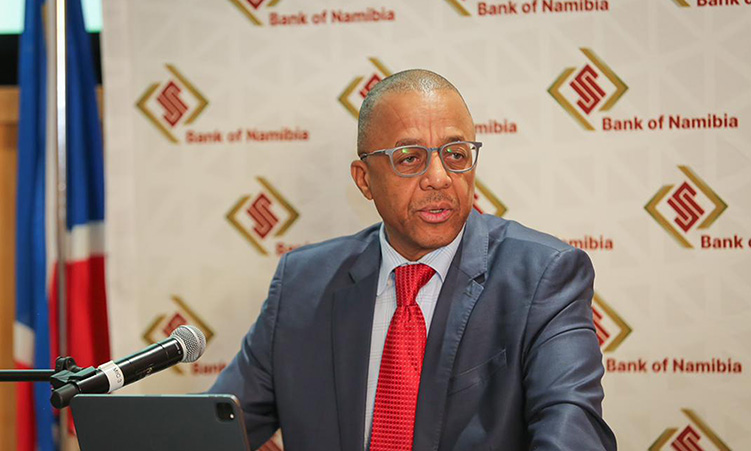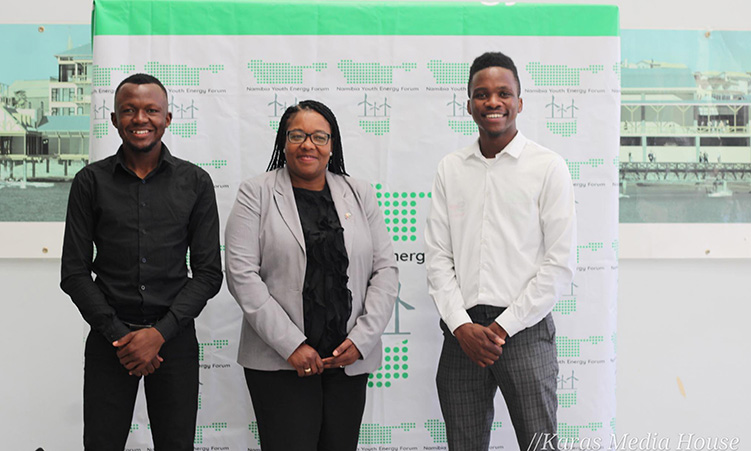FITCH Ratings last week affirmed that Namibia’s long-term foreign currency issuer default rating (IDR) at ‘BBB-‘ (BBB minus), long-term local currency rating at ‘BBB’ and Short-term IDR at ‘F3’.
The outlooks for the long-term ratings are stable. As a member of the Common Monetary Area, Namibia’s country ceiling is ‘A’.”Namibia’s ‘BBB-‘ (BBB minus) rating balances its fundamental rating strengths of strong public and external balance sheet numbers, which are better than the ‘BBB’ rating medians, and a good growth record against the structural reform agenda needed to raise growth potential, ease pressure on the financial and capital account, and address income inequality and other development challenges,” says Veronica Kalema, Director in Fitch’s Sovereigns Group.Namibia’s public finance and external balance sheet numbers have strengthened over the past year primarily because of exceptional revenues from the Southern African Customs Union (SACU), but also because of a continued disciplined approach to public finances.The country achieved its first budget surplus since independence in FY06 (the fiscal year to end-March 2007) and public debt is expected to decline below the government’s fiscal target of 25 per cent in FY07 and below the ‘BBB’ rating median of 29 per cent.Government cash balances with the central bank have also risen rapidly due to SACU revenues; on a net basis, public debt is 20 per cent of GDP.However, public sector reforms to address the prospective decline in SACU revenues, re-orient spending from recurrent towards development spending and improve the efficiency of social and capital spending remain a challenge.Fitch notes that in 2006, the country also achieved a very large balance-of-payments surplus and reserves rose to their highest level since independence.Fitch expects reserves to end the year at around US$850m, double their 2006 level.This rise in reserves will help mitigate concerns about weak international liquidity within the context of very large capital outflows by Namibian pension and insurance funds to South Africa’s capital markets.Namibia’s strong 2006 net foreign assets position of US$1,5 billion (22 per cent of GDP), representing large portfolio assets abroad, is a credit strength.The medium-term outlook for growth in the four to five per cent range is good despite a tightening in monetary policy since June 2006, which has slowed private credit growth and consumer spending.Growth is being supported by strong investment in minerals production and rising output, rising public investment and tourism that is benefiting from a marketing drive.Fitch notes, however, that although the growth outlook has improved, it is still weaker than its peers.Furthermore, with GDP per capita at less than half of the ‘BBB’ median, Namibia has to consistently implement a structural reform agenda and raise growth potential or else risk falling further back on this measure relative to its peers.In 2007, progress on structural reforms has been mixed.In particular, slow progress on the negotiation of the new Economic Partnership Agreement with the EU, which will mainly affect meat exports, represents a potential short-term threat with adverse implications for growth, exports and poverty reduction.Negotiations on the US Millennium Challenge Account grant, which would help raise competitiveness, have been slowed by technical aspects of the contract.Partial listings of public enterprises on the Namibia Stock Exchange as a way of increasing domestic investment opportunities and introducing market discipline are off the agenda.On the other hand, progress has been made on major infrastructure projects, such as the Walvis Bay port expansion, by Nampower (the national power utility), parastatals bond listings and the conclusion of a new sales agreement with DeBeers that will help stimulate the local diamond polishing industry.In addition, the government is changing regulations to tighten domestic investment requirements, using a phased approach over five years to encourage the deployment of savings domestically.Nampa-ReutersAs a member of the Common Monetary Area, Namibia’s country ceiling is ‘A’.”Namibia’s ‘BBB-‘ (BBB minus) rating balances its fundamental rating strengths of strong public and external balance sheet numbers, which are better than the ‘BBB’ rating medians, and a good growth record against the structural reform agenda needed to raise growth potential, ease pressure on the financial and capital account, and address income inequality and other development challenges,” says Veronica Kalema, Director in Fitch’s Sovereigns Group.Namibia’s public finance and external balance sheet numbers have strengthened over the past year primarily because of exceptional revenues from the Southern African Customs Union (SACU), but also because of a continued disciplined approach to public finances.The country achieved its first budget surplus since independence in FY06 (the fiscal year to end-March 2007) and public debt is expected to decline below the government’s fiscal target of 25 per cent in FY07 and below the ‘BBB’ rating median of 29 per cent.Government cash balances with the central bank have also risen rapidly due to SACU revenues; on a net basis, public debt is 20 per cent of GDP.However, public sector reforms to address the prospective decline in SACU revenues, re-orient spending from recurrent towards development spending and improve the efficiency of social and capital spending remain a challenge.Fitch notes that in 2006, the country also achieved a very large balance-of-payments surplus and reserves rose to their highest level since independence.Fitch expects reserves to end the year at around US$850m, double their 2006 level.This rise in reserves will help mitigate concerns about weak international liquidity within the context of very large capital outflows by Namibian pension and insurance funds to South Africa’s capital markets.Namibia’s strong 2006 net foreign assets position of US$1,5 billion (22 per cent of GDP), representing large portfolio assets abroad, is a credit strength.The medium-term outlook for growth in the four to five per cent range is good despite a tightening in monetary policy since June 2006, which has slowed private credit growth and consumer spending.Growth is being supported by strong investment in minerals production and rising output, rising public investment and tourism that is benefiting from a marketing drive.Fitch notes, however, that although the growth outlook has improved, it is still weaker than its peers.Furthermore, with GDP per capita at less than half of the ‘BBB’ median, Namibia has to consistently implement a structural reform agenda and raise growth potential or else risk falling further back on this measure relative to its peers.In 2007, progress on structural reforms has been mixed.In particular, slow progress on the negotiation of the new Economic Partnership Agreement with the EU, which will mainly affect meat exports, represents a potential short-term threat with adverse implications for growth, exports and poverty reduction.Negotiations on the US Millennium Challenge Account grant, which would help raise competitiveness, have been slowed by technical aspects of the contract.Partial listings of public enterprises on the Namibia Stock Exchange as a way of increasing domestic investment opportunities and introducing market discipline are off the agenda.On the other hand, progress has been made on major infrastructure projects, such as the Walvis Bay port expansion, by Nampower (the national power utility), parastatals bond listings and the conclusion of a new sales agreement with DeBeers that will help stimulate the local diamond polishing industry.In addition, the government is changing regulations to tighten domestic investment requirements, using a phased approach over five years to encourage the deployment of savings domestically.Nampa-Reuters
Stay informed with The Namibian – your source for credible journalism. Get in-depth reporting and opinions for
only N$85 a month. Invest in journalism, invest in democracy –
Subscribe Now!










